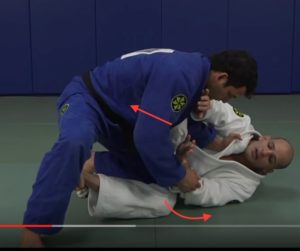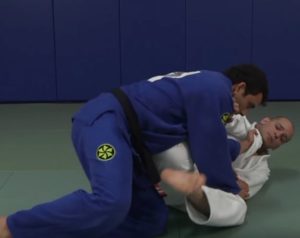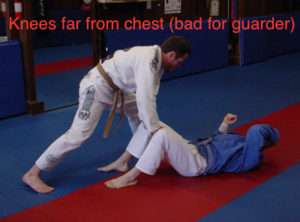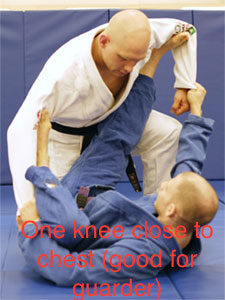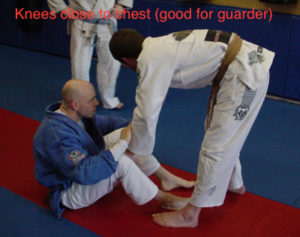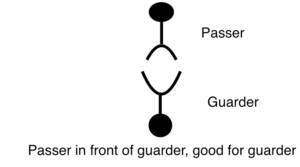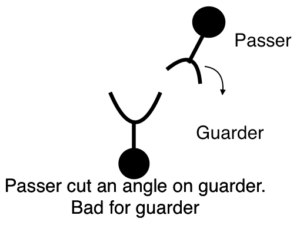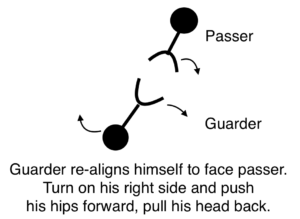Please take a look at my post ‘Open guard retention principles‘ for more on open guard retention.
Defending and countering the Toreando pass
The Toreando pass, aka the bullfighter pass, at a very oversimplified level, involves grabbing the legs at the pants, throwing them to one side, and running around to the other side. My thoughts on defending the Toreando are:
You should prevent them from grabbing both legs at the pants
Since grabbing both legs at the pants is a prerequisite for executing the pass, preventing that situation will automatically prevent the pass. You’d accomplish this by establishing control over their hands and breaking their grip immediately if they do get a pants grip.
If you can sit up, you should sit up.
This keeps your knees close to your chest, which is an important guard retention principle. If someone is trying to Toreando you, usually they’re grabbing your legs, so nothing stops you from sitting up. When you’re sitting up, you can use a lot of hip movement to help prevent the pass, which will be demonstrated in some of the videos that I link below.
Pull or push their head to the side that their legs are running around to
The opponent wants to end up on side control with his head on one side of your body and his legs on the other side. If you can force his head towards the same direction as his legs, he won’t be able to pass. This is part of the reason why the collar drag is such a common counter for the Toreando.
Move your hips away from the side that their legs are running around to, and point your knees towards that side
The top guy’s goal with the Toreando is to force your knees to point away from his hips, to prevent you from putting him back in the guard. If your hips stay where they are and he pushes your knees away, they will end up pointing away. But if he pushes your knees away, and you also move your hips away, you may be able to keep your knees pointing towards his legs.
See below for some YouTube clips that illustrate these principles.
Here’s Firas Zahabi on ‘powerful guard pass prevention’ against the Toreando pass. It involves using a collar grip and hip heist to get up and collar drag.
Here’s Jeff Glover using an arm drag / rollover sweep:
Here’s Flavio Almeida using a wrist/sleeve push (The clip is named ‘Defending The Bull Fight Guard Pass’
Here’s Jeff Joslin with ‘Brazilian Jiu-Jitsu (BJJ) Technique Breakdown – Bullfighter Guard Pass Counter’. The technique involves moving the hips and throwing the opponent by.
This Demian Maia clip ‘Demian Maia Science Of Jiu-Jitsu Series 1 – Defending The Guard Pass’ is mostly about defending the Toreando through hip movement and framing.
